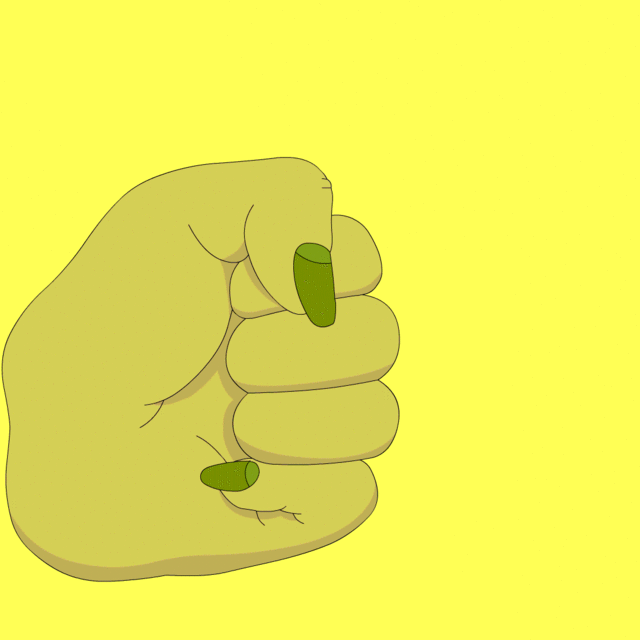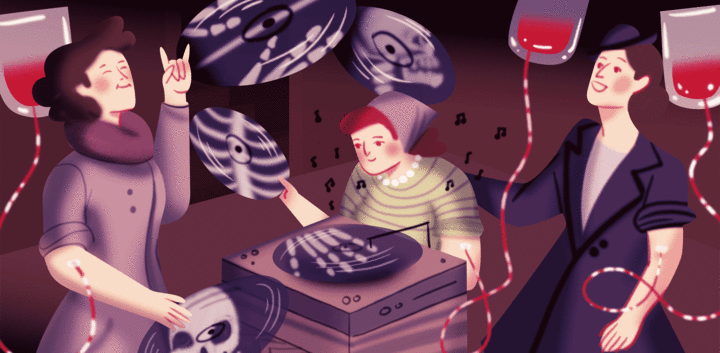
Passion Points: An Ode to True Believers
By Keryce Chelsi Henry
Illustrated by Simone Noronha
Long before loyal beauty brand users were called cults and fandoms ruled the world, before we planked or ice-bucketed or mannequin-challenged ourselves to ephemeral online glory, people were uniting around shared realities. We need community, and whatever you call them—trends, fads, crazes, even conspiracy theories. They help people find their tribes, and they did so even before we had access to the Internet’s meme-spreading power. So, respect. From folks mass-walking to nowhere for no apparent reason to a remote tribe worshipping a 96-year-old man who lives 10,000 miles away, here’s our salute to the odd true believers who organized across history.
• • •
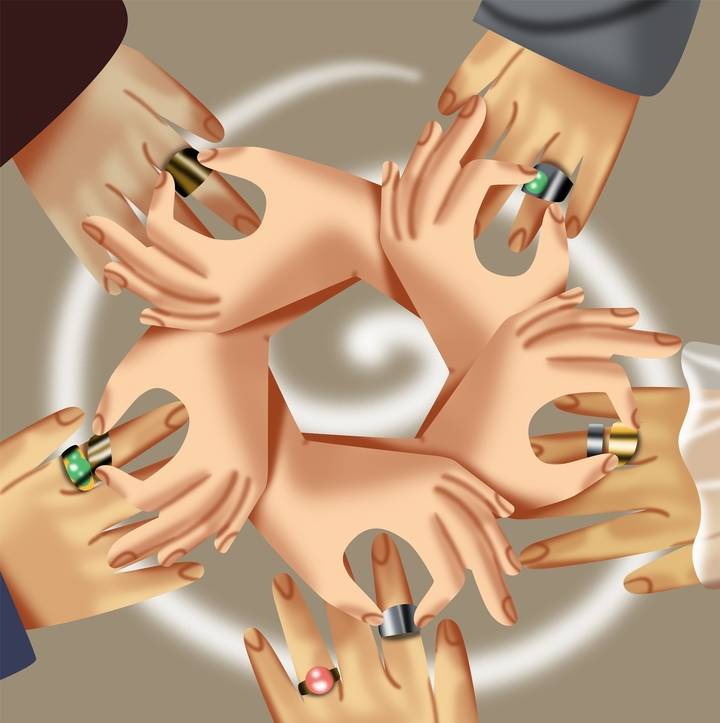
Turning Anywhere for Love
An odd practice consumed New York City women beginning in the late 1890s: They’d walk up to a random man on the street, grab his left hand, and rotate his wedding ring. Turn 25 rings, the story went, and the next man you shook hands with would become your husband. Apparently, unwed women spent so much time jabbing at men’s fingers that employers claimed it was stalling productivity at work. Newspapers from the time featured testimonies of those who knew other ladies for whom the trick paid off—but, curiously, never any firsthand accounts.
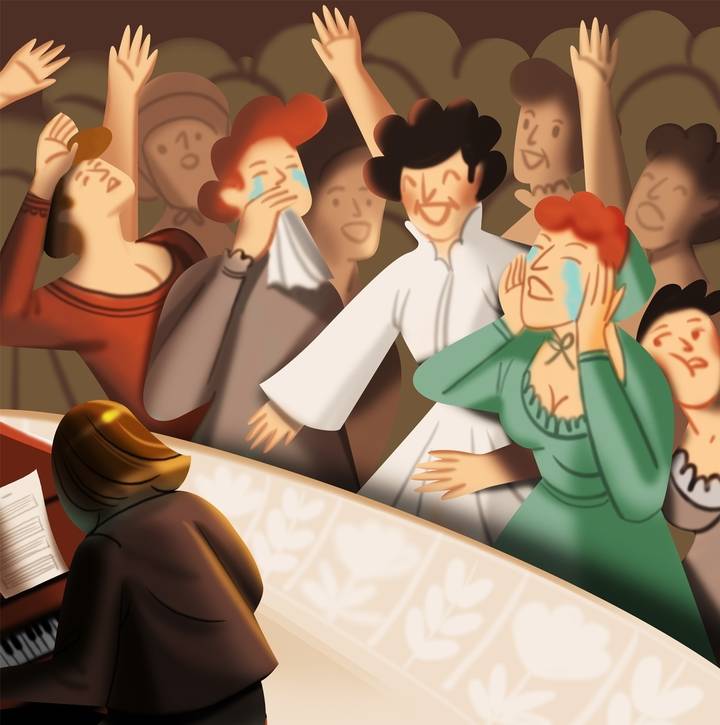
I <3 Liszt
On December 27, 1841, in a concert hall in Berlin, mass hysteria befell the local women, and it was all because of Franz Liszt. The handsome Hungarian’s compositions were so emotional, so ethereal, that they drove his female fans to pre-Beatlemania extremes: They screamed, rushed the stage, and fought over his handkerchief and gloves. And the “Lisztomania” (as newspapers dubbed it) only intensified after the performance; as his European tour continued, women began sporting his portrait on brooches and trying to steal his broken piano strings or locks of his hair. One fan plucked Liszt’s cigar butt from the trash and wore a piece of it in a locket, unconcerned about its smell. Consider it the Victorian equivalent of the Beyhive, Directioners, and the army of Beliebers.
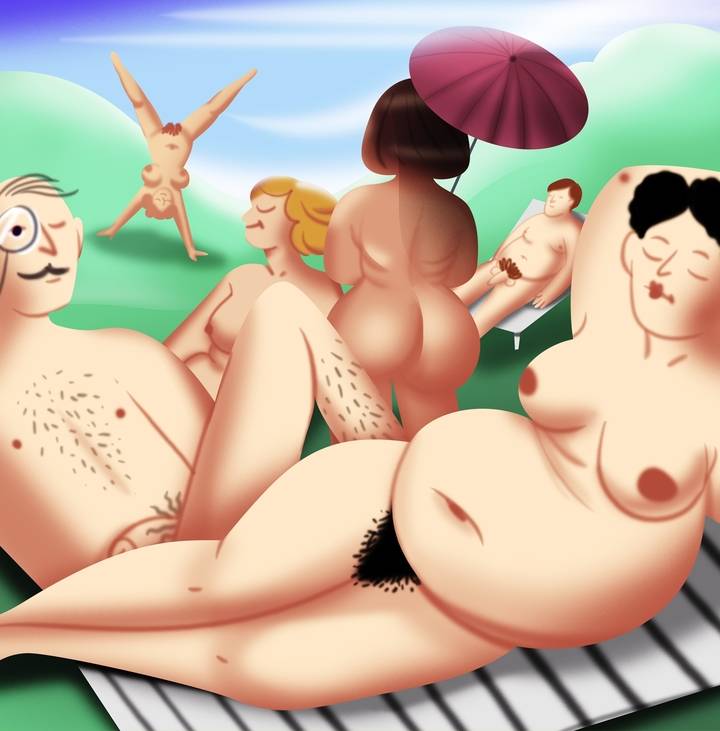
Together, in the Altogether
Nudism was nothing new by 1903 (because, you know, it’s existed as long as humans have), but it reached lifestyle status that year with the opening of Germany’s Freilicht Park, the first organized club for nudists. Inside, members did calisthenics, shared meatless meals, and let it all hang out for vague wellness reasons: Someone decided nakedness was healthy, and everyone rolled with it. A few decades later, Adolf Hitler, a man known for his next-level insecurity, tried to suppress the growing nudist movement, but not even he could stop people from whipping their pants off: By the 1930s, these clubs had spread to the United Kingdom, Canada, and the United States, and the French coined the term naturisme (“naturism”) to describe the lifestyle, defining it as a harmonious state of being with nature and other people.
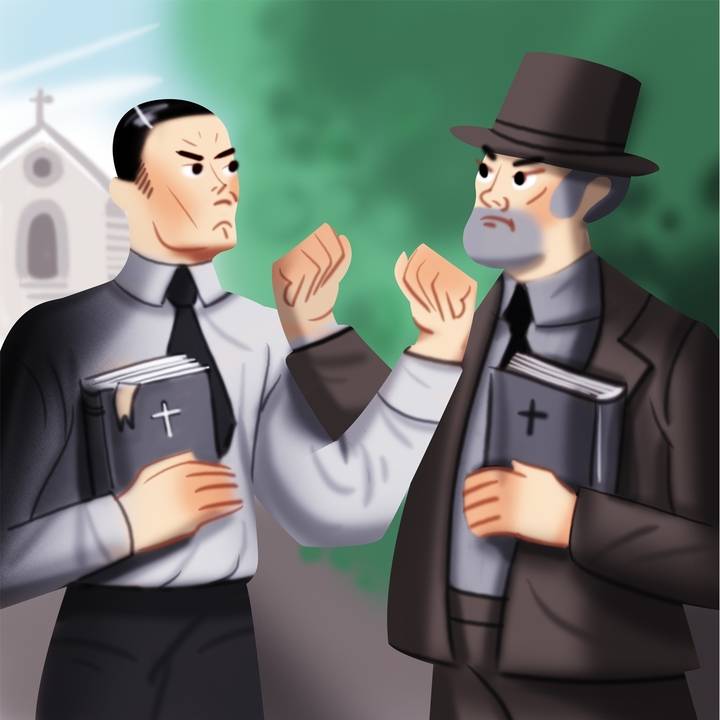
What Would Jesus Lift?
At the start of the 20th century, white Christian men gave their religion a macho makeover. Historians say that Jesus-fearing dudes felt the faith had become too fey (church attendees were overwhelmingly female), so they kicked off a movement known as “muscular Christianity,” linking discipleship with getting swole. Together, they lifted weights, formed sports leagues, punched at one another in frequent boxing matches, took unintentionally hilarious “tough” photographs, and viewed weakness and illness as sins. Their justification? Jesus must’ve been fit if he was running around healing people and walking on water. The movement went wide, with bear-boxing Teddy Roosevelt serving as the brand’s poster child, and church-sponsored activities led to the creation of the Boy Scouts and the YMCA—which makes the Village People song pretty ironic.
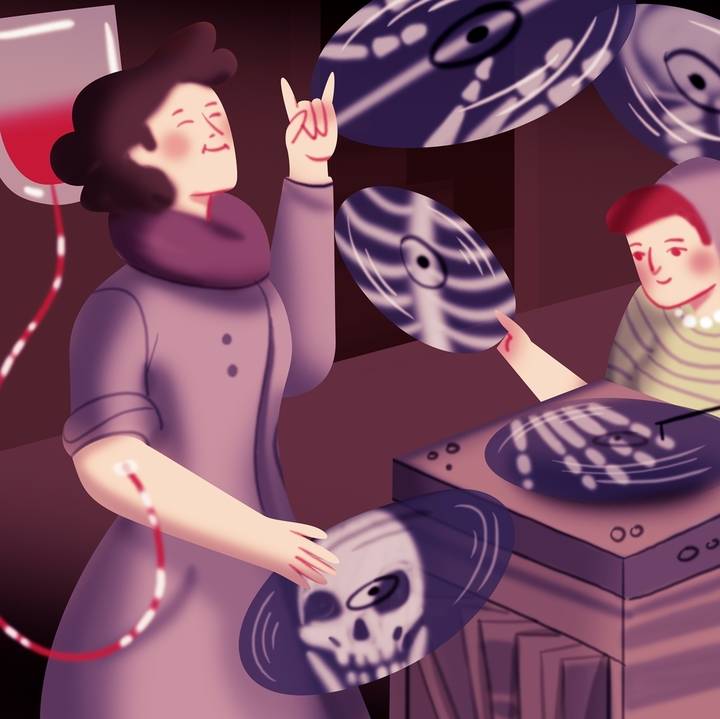
Broken (Bone) Records
In the USSR of the 1950s, government censorship was no match for music snobs. After Joseph Stalin outlawed all music that wasn’t about socialism’s excellence, some resourceful Soviet Russians realized they could DIY vinyl records by etching songs into old X-rays and playing the results on turntables. An underground bootlegging operation was born, with shady entrepreneurs shilling “bone recordings” of American rock music and illegal Russian songs in back alleys. (You might not get the single you asked for, but the sound quality was so ghastly, you could barely tell the difference.) Music lovers were willing to risk jail time to get their hands on the music; there were reports of people donating blood for cash to buy the makeshift records.

Oh My Prince Philip
On the Tanna island of the Pacific island nation Vanuatu, the indigenous natives’ pantheon of gods and goddesses included an unlikely deity: Prince Philip. An ancient prophecy stated that a mountain spirit would have a pale-skinned son who married a powerful woman abroad before returning to the island. When Prince Philip visited with Queen Elizabeth II in 1974, he ticked all the boxes—and was promptly deemed the messiah. The prince became pen pals with the 400 villagers after he left, sending them his portraits and receiving a traditional pig-killing club in return. The people have also attributed various world events to Prince Philip’s magic, including Barack Obama’s election and Osama bin Laden’s capture. After the prince announced his retirement in May 2017, a cyclone hit the island, but the residents weren’t even fazed—they saw it as a sign that their god would be returning home soon.
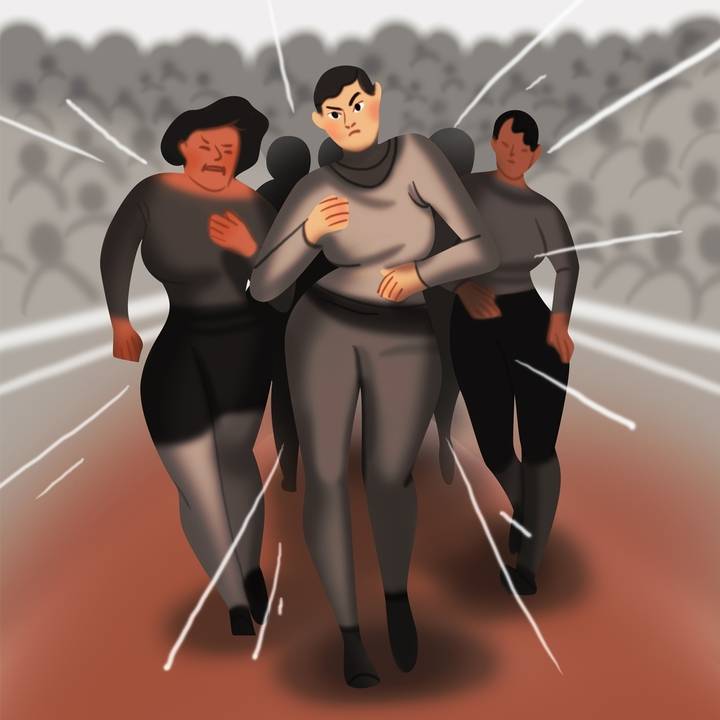
Walk, Don’t Run
Life was pretty boring after the Civil War—so much so that the only way Americans could entertain themselves was to walk. Competitively. And for days at a time. After all, the country’s existence was no longer at stake, and more Americans had moved to the cities, which weren’t nearly as thrilling as the farms they’d left behind. (It was the 1870s—farming was fun.) So thousands would flock to watch the walking matches, which featured lucrative prizes, live music, corporate sponsorships, and drug scandals. (The substance of choice? Champagne.) These weeklong walkathons were also relatively progressive, with black and female competitors, the latter of whom were no joke: At the 1899 Grand Female Walking Match, one participant was thrown into jail after fighting another for getting in her way. She posted her $10 bail and went right back to the competition.
KERYCE CHELSI HENRY is a writer, editor, and music-obsessed human from New York City.
SIMONE NORONHA is an illustrator and animator in Brooklyn.
Published 3-12-2018


